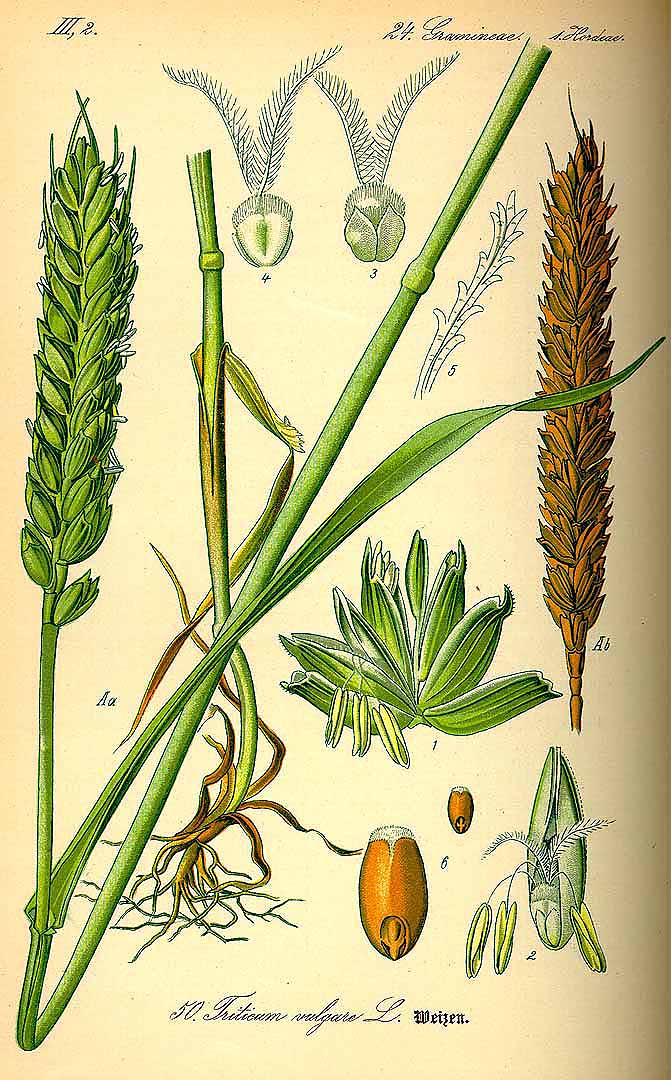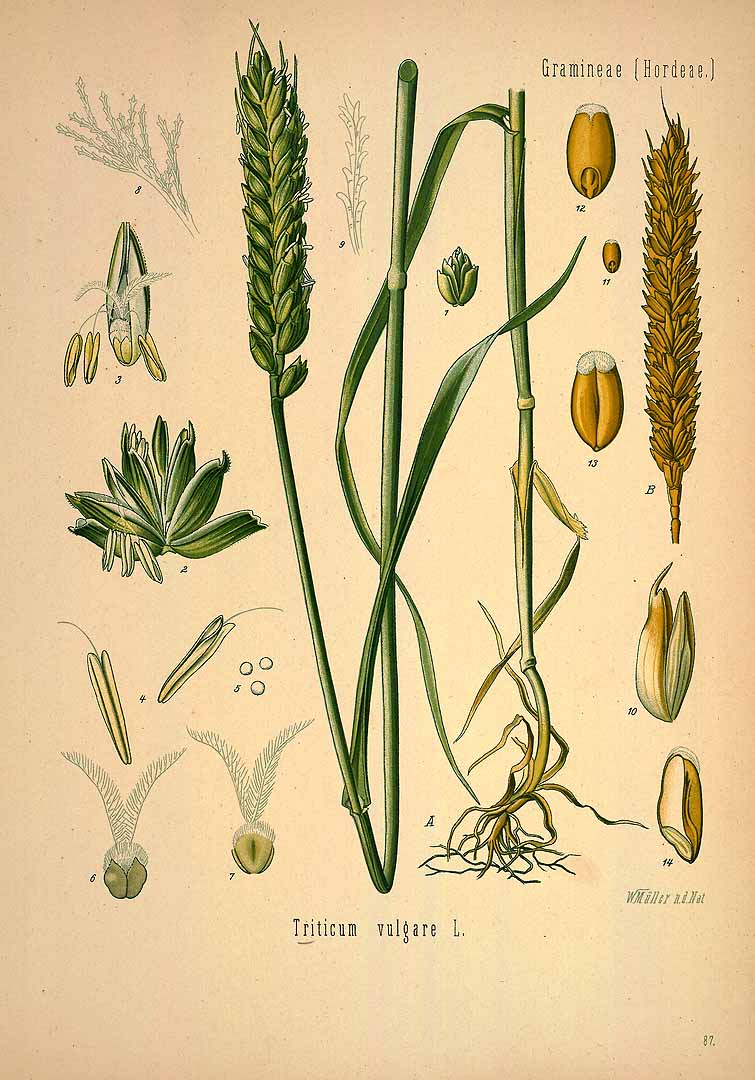! Nouveau site ici !
Vita > Plantae > Magnoliophyta > Liliopsida > Cyperales >
Poaceae > Triticum
Triticum aestivum
(Blé tendre)

 | ****
| ****
Vita > Plantae > Magnoliophyta > Liliopsida > Cyperales >
Poaceae > Triticum
Triticum aestivum
(Blé tendre)

Une herbe annuelle. Il forme facilement des talles pour produire un bouquet de pousses. Les plantes poussent entre 30 et 80 cm de hauteur. Les tiges sont dressées et simples. Ils sont généralement sans poils... (traduction automatique)
→suite
⬀
Le  donne accès au menu
donne accès au menu (c'est votre point de repère) 😊 ;
En dessous vous avez la classification, à partir de la vie (Vita, premier rang) jusqu'à la classe au dessus de la plante, dont vous trouvez ensuite le nom scientifique/botanique (latin) puis le nom commun (français), le cas échéant ;
C'est aussi un lien vers la fiche complète (tout comme la ✖, en bas à droite, et le +, en dessous de la description) ;
Vient alors l'illustration (ou ce qui la remplace, en attendant), la comestibilité :
Et en bas
⬂





